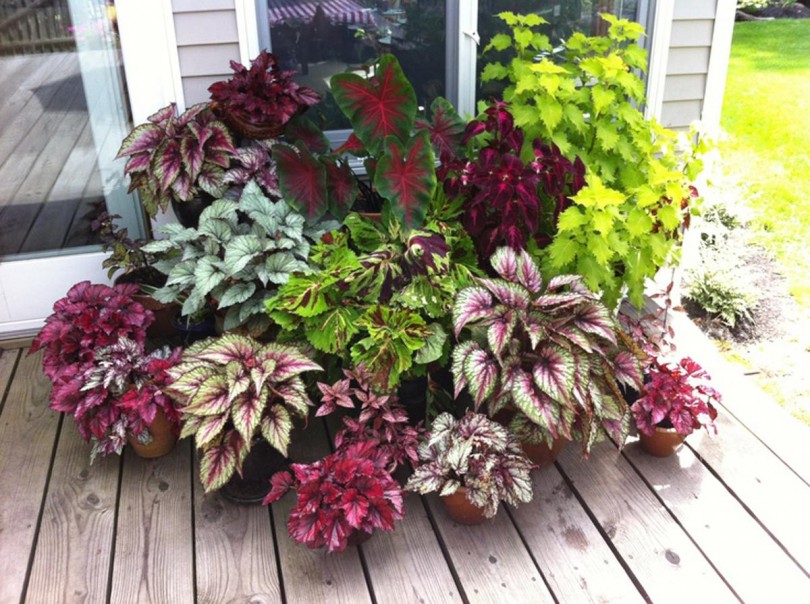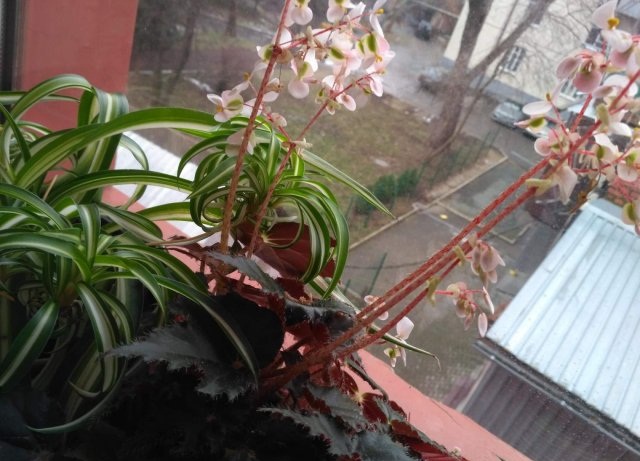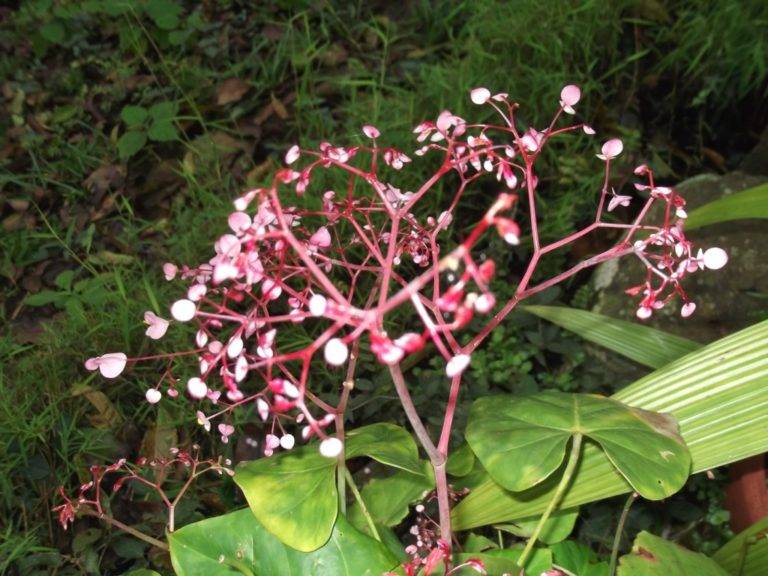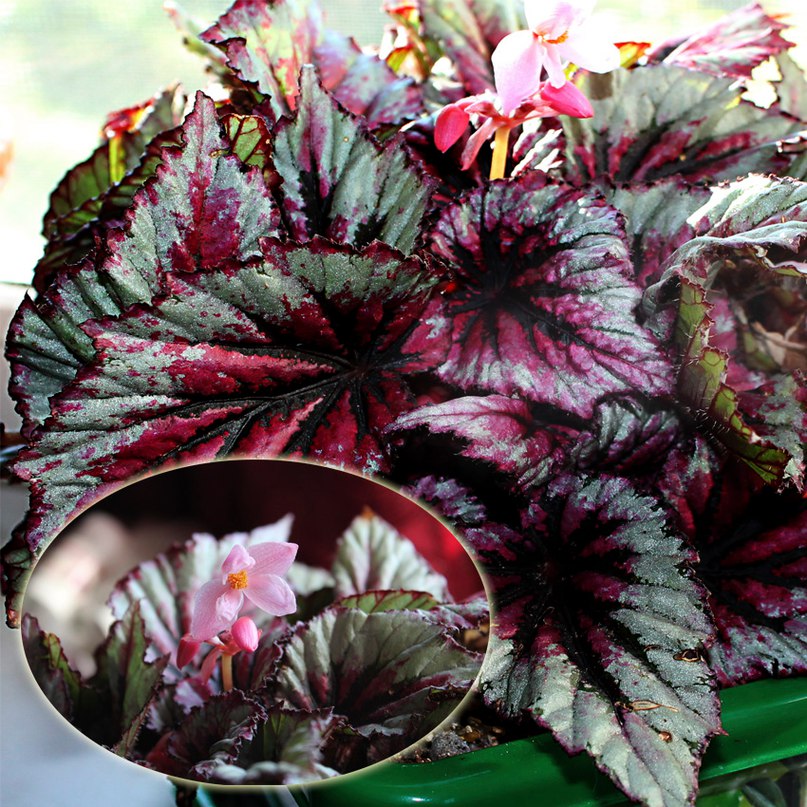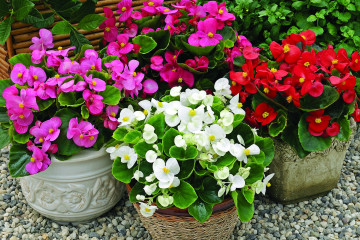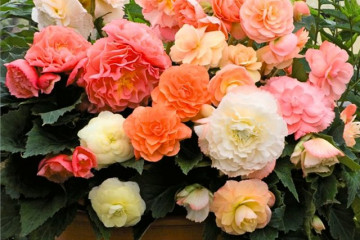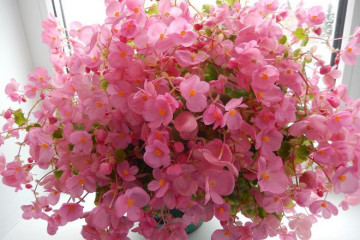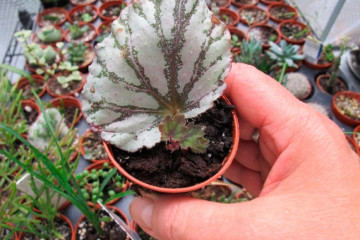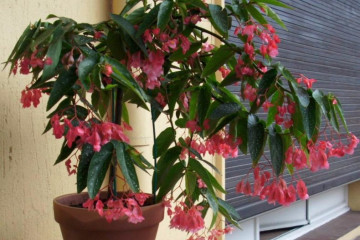Begonia decorative leafy and decorative flowering
Content:
Among all the plants that are grown on the windowsill, one of the most popular is decorative leaf begonia, or leaf.
The variety of varieties is extremely wide, the color of the leaves is dissimilar in different species, although they all belong to the same family. The shape of the leaf and its color are also different. Many grow different varieties, collecting entire collections. Begonia is very unpretentious, which is what connoisseurs of indoor floriculture fell in love with. The conditions for growing plants are the most common, nevertheless, some care rules must be followed. This article tells about how begonia leaf care grows and develops at home.
Origin and appearance
The beauty and attractiveness of this plant lies in the luxurious lush bush of leaves, although there is also a tree-like form in nature. Moreover, it is not even the shape of the leaves that is valued, which can be round, cut, with carved edges or even twisted in a spiral. Decorative deciduous begonias are interesting primarily for their various colors; on the windowsill, silver, chocolate-brown, and crimson specimens, and variegated with a combination of three colors in one leaf, and covered with hairs can coexist. The flowers of such begonias are unpretentious, inconspicuous, collected in unsightly whitish or pinkish panicles.
Decorative begonia is now discovered in more than 1500 species, all of which belong to the Begoniev family. If you add hybrid varieties, you get more than 2 thousand varieties. Almost half of them are decorative leaf begonia. It is distributed on all continents with tropical and subtropical zones, except Australia. In nature, the plant grows in rock crevices, in humid and shady forests, along small shaded streams, sometimes in dry subtropical forests.
In the 19th century, begonias are found in other places and continents; they begin to breed it in greenhouses, where they recreate an almost natural humid climate. In Russia, the beautiful begonia appeared at the beginning of the 19th century, having received the nickname "Napoleon's ear" for its asymmetrical leaf shape, with a hint of the frostbitten part of the French conqueror's ear.
Today begonia has long become a flower that is bred on a gigantic scale, primarily in Belgium. More often it is decorative flowering begonia, but deciduous forms are also numerous and loved.
In nature, everything is thought out and weighed: if the flower of a plant is catchy, bright, then it itself is a gift, because the rest of the time the plant can be unprepossessing. If the flower is so-so, pale, then it definitely has another charm - leaves, this is just applicable to decorative leafy species. Available - catchy greens, bright, juicy and attractive, a beautifully shaped leaf and a pattern on it.Unlike tuberous begonias, leafy begonias do not bloom very long and not so powerfully, although through the efforts of breeders such varieties have been bred that have a sufficiently long and abundant flowering.
Types and varieties
Even those who are not interested in plants have heard the name "royal begonia". It can very often be found on home windowsills, because, despite the status name, this beautiful flower is completely unpretentious and easy to care for.
During the Soviet era, Rex begonia was sold for some reason under the name Charm, it was widespread everywhere. Today, many amateur flower growers in Russia and Ukraine are engaged not only in breeding, but also in their own selection of these plants.
Among the most popular varieties are:
- Royal begonia, or Rex begonia - the leaves are two, - or tricolor. It grows widely, leaf plates can reach a width of 25, a length of 30 cm;
- Begonia Bauer - among all begonias, it has the most cheerful spotted color, slightly toothed leaves;
- Mason's begonia is a plant native to New Guinea. The colors of its leaves are interesting, on which the semblance of a dark brown Maltese cross on a green background is clearly visible. The flowers are whitish-beige, small;
- Cleopatra is a very popular variety with carved green leaves that are reddish on the back. Flowers are small, whitish;
- Collar begonia - it got its name because of the shaggy frame at the base of the leaf, it is distinguished by a pleasant appearance of neat smallish flowers and green leaves growing in a medium-sized rosette;
- Red-leaved begonia - it is distinguished by medium-sized thick fleshy stems and green leaves, which are intensely red on the back;
- Begonia hogweed - the leaves of this plant can be red-brown or bright green, the inflorescences are pinkish. She came from the tropics of Mexico, Brazil and South India;
- Spotted begonia is one of the tallest species, it is distinguished by mottling and contrasting green leaves and specks on them. There are many flowers;
- Begonia Alfalfa is a liana-like plant with erect leaves, artificially bred. Combines beautiful leaves with decorative flowering.
Transplanting after buying into pots
Experienced growers advise transplanting the plant from a purchased pot into a new soil. So it will take root faster and develop better. It is important not to transplant on a flower. Even if the plant does not bloom, you should not rush either - it is necessary to transplant it, a couple of weeks after the new tenant was brought into the house.
What is needed for landing
For a transplant you will need:
- pot, preferably earthenware;
- sand - it is poured a little as drainage at the bottom of the pot;
- a soil mixture of half peat or humus and deciduous soil.
Optimal location
This plant does not like the abundance of light, especially since it should not be exposed to the sun immediately after planting. Burns may occur on the leaves, in general, a lot of sun is not good for the plant.
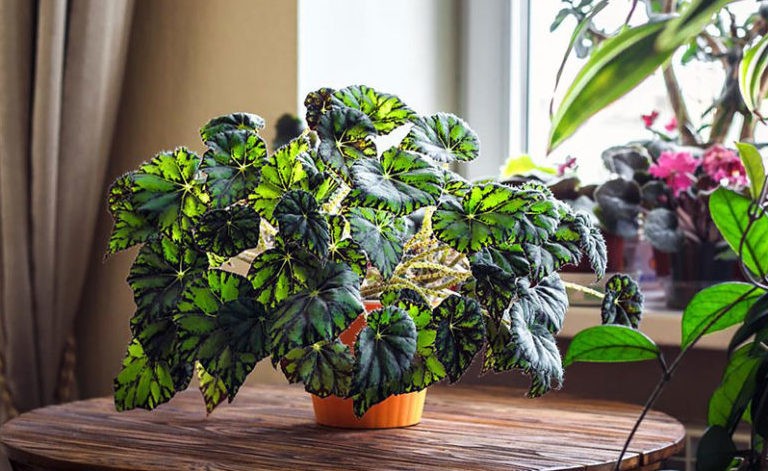
The plant loves shaded window sills, garden conditions in the summer or taking out to the balcony, it does not tolerate well
Step-by-step planting process
Reproduction of decorative deciduous begonias is not difficult. Since the flower is unpretentious, it easily takes root if everything is done correctly. About how this plant reproduces:
- Propagation by cuttings is the easiest and most common way. A stalk from an adult plant is cut off, the cut site is treated with crushed activated charcoal and sprinkled with earth. The soil mixture should consist of equal proportions of sand, peat and deciduous soil.In this state, the plant should stand until the roots appear. It is constantly watered, preventing the earthen coma from drying out. Rooting usually occurs one month after planting. It can also take roots in water, if the cut cutting is placed in settled water. After the roots appear, it can be planted in the ground.
- Reproduction by a leaf - the leaf is cut off, placed on wet soil and grabbed, pressing down with pebbles on top. After a couple of weeks, roots will begin to form from the leaf.
- The division of the bush is carried out if roots have formed on the creeping stem of the plant in places of contact with the ground. Near this place, a part of the plant is cut off with a sharp knife, the cut is processed with activated carbon, then planted in the soil in a separate pot.
- Growing from seeds is more difficult as the seeds germinate slowly. Snow is applied to the prepared soil (planting should be done in January), seeds are scattered over the snow so that they themselves go into the soil when the snow melts. Then cover with glass and sprinkle with a spray bottle. With the appearance of two true sheets, a dive is carried out and seated.
Leafy begonias care
Decorative foliage begonia in home care is unpretentious. It must be watered, avoiding excessive drying out of the soil. At the same time, the plant does not need excessive dampness. In winter, watering should be done more moderately.
This plant does not tolerate spraying from a spray bottle at all. Even a slight ingress of water on the leaves during watering gives a change in their color.
It is quite simple to care for this plant: water, fertilize and keep away from direct sunlight. Transplant young plants once a year, older ones - once every couple of years, so that they grow better, and the soil does not deplete. If you take care and care of a flower, it will always delight you with beautiful lush leaves and a modest but charming flowering.
